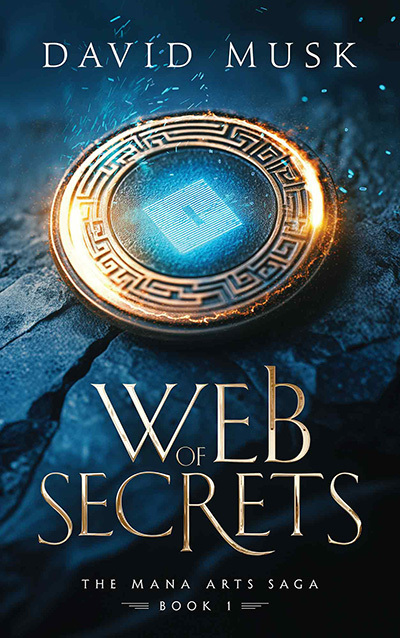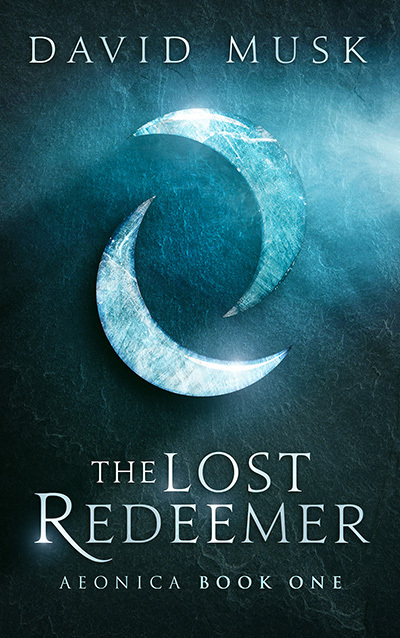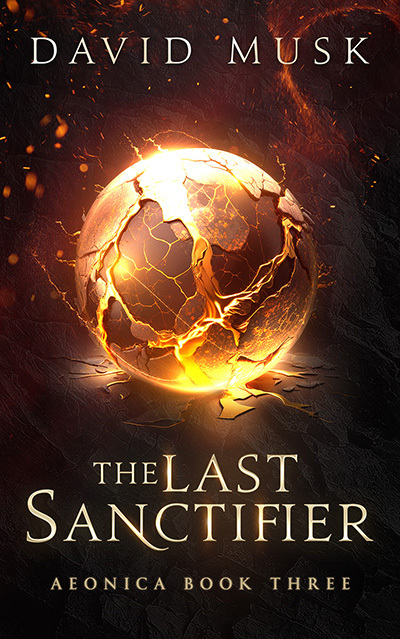Showing vs. Telling Part 2: Adverbs
May 26, 2020 · 10 minute read
You might have heard that adverbs are bad. Stephan King makes his distaste of them clear in his memoir, On Writing, and tools like ProWritingAid and HemingwayApp are quick to point out how many adverbs we're using, along with suggestions on what our maximums should be.
But what does the writing world have against adverbs? does the "ly" sound offend people?
If we go back to my original definition of showing and telling, things become clearer:
Showing is something you can see in your mind's eye. Usually, this involves nouns (people/places/things) or verbs (actions). Telling, on the other hand, is information that we can't easily picture.
Here are two examples:
1. Bob left the room angrily.
2. Bob stomped across the room and slammed the door.
These two sentences communicate the same information. Example #1 uses an adverb, and #2 using stronger, more specific verbs.
For most of us, Example #2 is going to paint a clearer picture in our heads. While the adverb "angrily" does change the meaning of the sentence, it does very little to help us envision the scene with any more clarity. Anger is an abstract concept. We can see a character stomping across the room and slamming a door, but we can't see "angrily."
Sure, we can imagine anger as readers, but only with extra effort. If readers have to do this extra work too often, they risk losing interest in a book and moving onto something more immersive.
Let's look at some more examples of adverbs in action:
1. "Come on!" Bob said cheerfully. "Let's go!"
2. "This isn't fair," she said darkly.
3. "I don't want to go," the boy said stubbornly.
5. "I'm fine," Mary said sadly.
6. "Uh-huh," John said absentmindedly.
7. "I'm right here," the girl said quietly.
So, how can we show these scenes with more clarity? Remember, showing means giving the readers something they can imagine. Things like action (verbs) or evocative imagery (nouns).
Feel free to imagine or write down your own solutions before continuing. After all, you'll learn much more through practice then you will by watching me do it.
Here are my solutions:
1. "Come on!" Bob skipped out the door. "Let's go!"
2. "This isn't fair," she bit off each word as she spoke, and her face darkened like a storm.
3. The boy held his ground and crossed his arms his over his chest. "I don't want to go."
4. "I'm fine." Mary held her head low, screwing her eyes shut.
5. John didn't even look up from his phone. "Uh-huh."
6. I'm right here," the girl whispered.
I'd argue that in all of these cases, we get a stronger sense of the character's emotions in the latter examples. Mary feels more sad when we can see her holding back tears. John seems more distracted when we can see what he's actually looking at.
But at least the adverbs above are contributing something. A pet peeve of many writers and reviewers is redundant adverbs. That is, when the dialog is already sufficient to communicate the message:
1. "I wish I had a car," Claire said wistfully.
2. "I'd rather just stay home and watch TV all day," Bill said lazily.
3. "Who cares if we crash?" Haley said recklessly
4. "I'm sorry," Leah said remorsefully.
5. "Have you been working out?" Mary asked flirtatiously.
Some of these are cringe-inducing. Others can be quite humorous, so you might not change a thing if you're writing comedy. (Or even a comedic scene in a serious story.)
But if you're not writing comedy, these are easy to fix. The dialog already communicates the message for us, so all we need to do is drop the adverbs. Sometimes, we might choose to replace 'said' with a different verb, but it's not always necessary.
1. "I wish I had a car," Claire said.
2. "I just wanna stay home and watch TV," Bill said.
3. "Who cares if we crash?" Haley hollered.
4. "I'm sorry," Leah whispered.
5. Mary squeezed his bicep. "Have you been working out?"
Short and simple. I did switch around some verbs, but that's optional. How much description you add will usually depend on the importance of the scene. If it's a dramatic scene, we want as many vivid details as possible. But when it comes to background characters in fast-paced scenes, simple is often better.
In Defense of Adverbs
So, reading these examples, you might be thinking that adverbs are all bad and should never be used.
At the very least, you probably think that's my personal perspective on the matter.
But like all forms of "telling", adverbs aren't inherently bad. They're merely a type of word that's commonly associated with telling.
As we've seen above, It's easy to plunk down an adverb after a piece of dialog and have it clarify your meaning with minimal effort. And because this method is so easy, it often gets overused with little thought on the writer's part.
But yes, you will find adverbs in most professionally published works. And not only are these authors considered competent by their peers but many of them are also known for their evocative styles.
So what's the difference? What makes adverbs okay sometimes but not others?
1. Adverbs are quick and efficient.
Adverbs are a type of telling, and like all forms of telling, we trade visual clarity for efficiency.
Let's look at these examples again:
1. "I'm fine," Mary said sadly.
2. "I'm fine." Mary held her head low, screwing her eyes shut to hold back the tears.
In most cases, Example #2 is probably better because it's showing the emotion rather than spoon-feeding it to the reader. Regardless, the latter uses eleven more words than Example #1. If this is an important scene with the main character, the extra words are worth it. If her mother just died, then "sadly" isn't going to cut it.
But what if this were a conversation between two background characters? What if she's only sad because her Amazon package is arriving a day late?
A lengthy description like the one in Example #2 might give Mary too much attention, causing the readers to believe she's more important to the plot than she actually is. In film terms, this is like having the camera zoom in on her for several seconds before cutting away.
Here's an example from my own writing where I chose adverbs for their efficiency (adverb is in bold):
1. "Alexel preferred victims who fought back, but Brighton was every bit the politician—all talk and little martial skill. The man hadn't begged for mercy either. Instead, he'd sat patiently behind his desk..."
In this scene, we're in the antagonist's POV, and he's remembering a minor character's death from moments before. Notice how I'm telling you that Brighton was patient instead of showing it. I could have gone into detail about how the man reclined in his chair drinking a glass of brandy. The details would have been more vivid, but they wouldn't have strengthened the scene. Brighton is dead in the current scene, and this is a quick flashback. He was a minor character, so the readers don't care about the details, especially if they aren't relevant. Using an adverb here kept the paragraph moving along so I could get to the details that matter.
2. Extra Emphasis
We talked about redundancies earlier, and how they can be comical or cringe-inducing.
Sometimes though, the extra emphasis makes a difference. Here's an example from the first chapter of The Name of The Wind by Patrick Rothfuss. I chose this particular author because he uses an above-average number of adverbs in his books, but he also chooses them with care.
1. The two men glared at each other for a long moment. Eventually Jake looked away, muttering something that could, conceivably, have been an apology.
Here's another example from my own series, Aeonica:
2. An hour later, Ciena emerged from the bathhouse with her hair freshly braided and her skin smelling far too sweet.
This paragraph is meant to contrast the previous scene where Ciena is sitting in a dark cell with her hair in disarray. She prefers to have her hair in braids, and the adverb hints at her preference without stating it outright.
3. Dialog
As writers, we know that adverbs can be overused in prose. But guess what? Your characters don't know that. They're going to use whatever words feel natural to them.
Here are some more examples from The Name of The Wind by Patrick Rothfuss:
1. The innkeeper spoke up for the first time that night. "Actually, you're missing more than half..."
2. "We certainly would not want to offend you or your patron," the mayor said.
3. "He was lucky, that's all. Even so he was badly hurt. Forty-eight stitches. I used up nearly all my gut."
4. Bast shrugged. "It might as well be, Reshi. It's probably the best thing for them to think."
Most writing advice would tell you to avoid words like "probably", "actually" or "really" in your prose, but anything goes when it comes to dialog.
And really, if these words can pop up in dialog, who's to say they wouldn't pop up in first-person prose from time to time? After all, it's the same person speaking.
And for that matter, is third-person limited prose so different from first-person? If adverbs pop up in the POV character's dialog, shouldn't they also be in the descriptions to keep the narrative voice consistent?
As you can see, adverb usage is more of an art than a science. We'll get back to that in a second.
4. Humor
This one is a bit self-explanatory, and I've already covered it above.
Here's another example from The Name of the Wind:
1. Hetera smelled vaguely of cinnamon, and at nine years old I found her fascinating without exactly knowing why.
In this scene, The adverbs make the sentence more light-hearted and playful rather than coldly stating the facts. This sentence could also fall under the Extra Emphasis category.
Here's another example from Harry Potter:
2. "Let me through, please," said Percy, bustling through importantly.
Rowling gets a lot of criticism for her adverbs (as does Rothfuss) but they can be hilarious and charming at times. And while adverbs are normally associated with telling, this one paints a vivid picture. In fact, it might even be more vivid than if she'd said, "bustling through with his head held high."
5. They Sound Nice
Adverbs have a flowing quality that can break up choppy sentences. Sometimes, you simply need a word with two or three-syllable to break up the monotony or to give your words the right rhythm. Sometimes, an adverb will fit your needs perfectly.
Again, let's see some examples from Patrick Rothfuss:
1. "So Taborlin fell, but he did not despair. For he knew the name of the wind, and so the wind obeyed him. He spoke to the wind and it cradled and caressed him. It bore him to the ground as gently as a puff of thistledown and set him on his feet softly as a mother’s kiss."
2. He was two dozen feet from me, but I could see him perfectly in the fading light of sunset. I remember him as clearly as I remember my own mother, sometimes better. His face was narrow and sharp, with the perfect beauty of porcelain.
Closing Notes
Adverbs are a writing tool that many new writers overuse. And like I said before, their usage is more of an art than a science. Like any art form, they take practice. No one can give you a perfect framework of when to use them and when to avoid them.
All I can say is this: whenever you use an adverb, take a few seconds to consider it. Ask yourself, is this an important scene that could benefit from more vivid details or stronger verbs? Is the adverb getting in the way of those details? Am I using it because it's the best word, or because it's the easiest word?
Only you and your readers can answer these questions.
This isn't always realistic, of course. We all have chapters to post and deadlines to meet, and a single word might be the least of our concerns. But the more you practice and consider this, the more it will come naturally to you.



